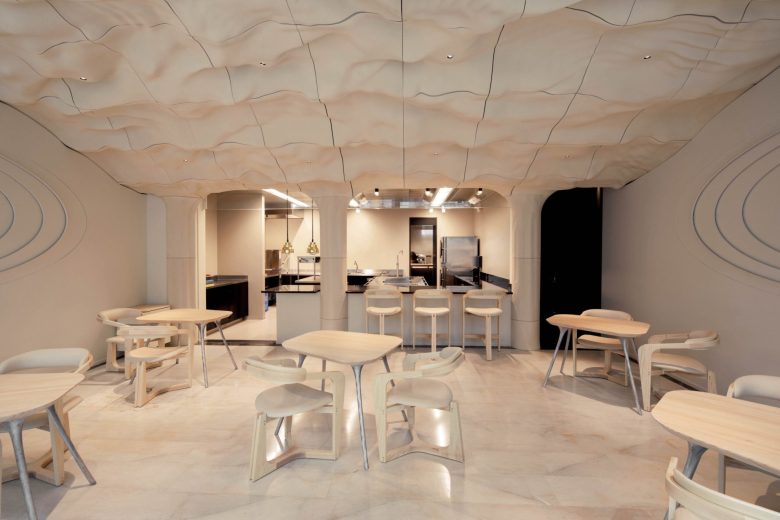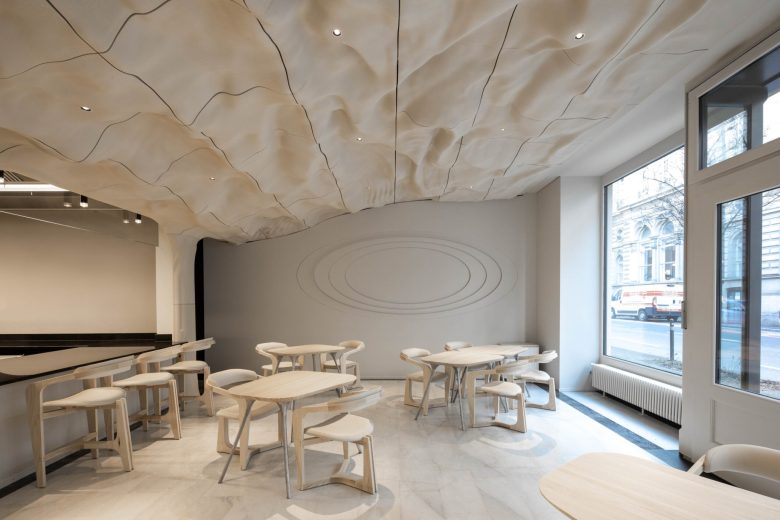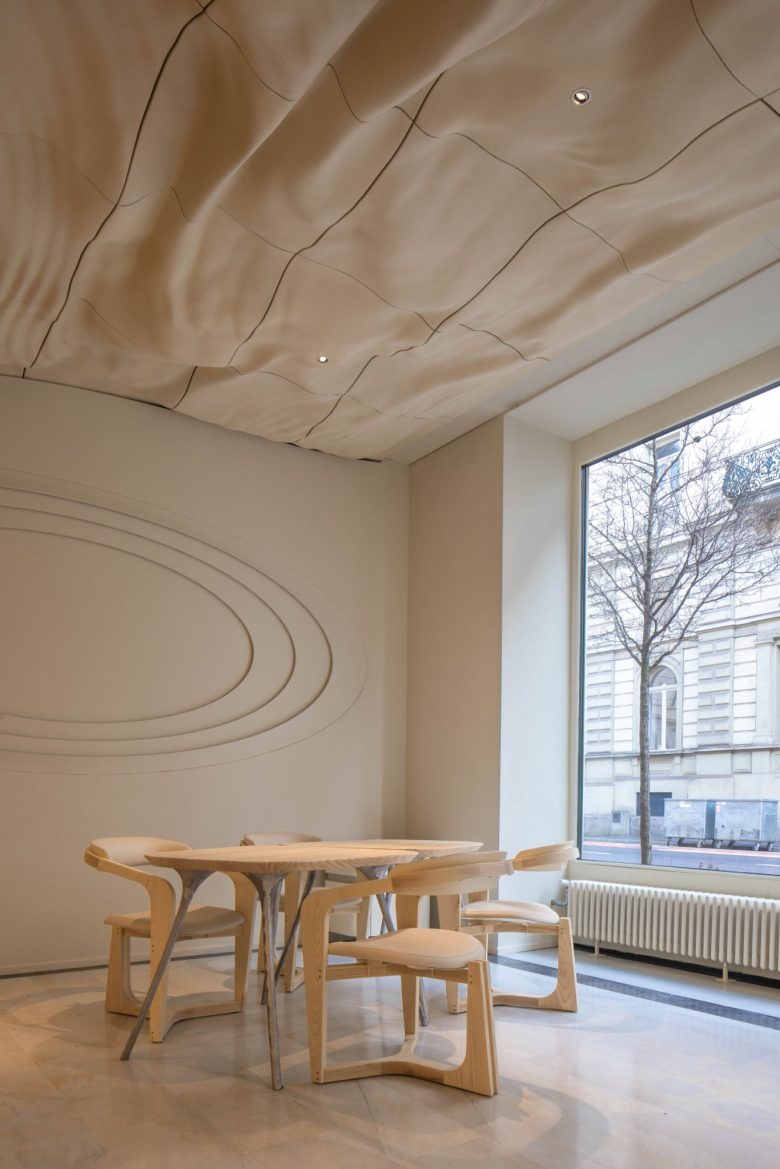

The restaurant CAAA by Pietro Catalano, located in the city of Lucerne in Switzerland, is a project that not only seeks to delight palates with its culinary creations but also aims to create a gastronomic experience reflected in the space to stimulate the senses of diners. The restaurant, developed in 80 m2 with space for approximately 20 diners and an open exhibition kitchen, takes inspiration from the majesty of the Alps, Catalano’s DNA, and its chefs. Through a conceptual/reflective process driven by new technologies, the design process took as its starting point the use of artificial intelligence image generation tools (Midjourney) to explore possible solutions that would advance towards a parametric design proposal. Subsequently, Grasshopper 3D, a plug-in running within the CAD application Rhinoceros 3D, was used to translate these concepts into three-dimensional models. The final result was materialized through 3D printing and physical construction of the design in Switzerland.’The Forest’, the main area of the restaurant, is a space where guests are immediately immersed in a feeling of comfort and warmth, introducing them to the unique culinary offering inspired by the transalpine region. The predominantly white interior, accentuated by warm lights, has been created through the 3D printing of organic pieces made to measure to form the ceiling, achieving a sense of pristine tranquility reminiscent of trees and snow-covered mountains. When day turns into night, the atmosphere undergoes a magical transformation. The space comes to life with fascinating projections of the Northern Lights, creating an immersive and supernatural experience that leaves diners speechless, seamlessly combining the wonders of nature with the comfort of a cozy retreat.Regarding materials, the studio’s and Catalano’s faithful commitment to sustainability and cutting-edge design has been reflected. A combination of recycled materials such as cellulose, glass, wood, and plastic has been used, selected to complement each thematic area. Speaking of furniture, it has been designed entirely bespoke, and the materials used for the chairs include ash wood and steel. As for the tables, they are made of pine wood for the top surface and aluminum injection for the legs. This method represents an interpretation of the creative potential of Artificial Intelligence in architecture, replacing traditional freehand drawing skills and transforming conceptual inspiration into tangible reality.
Designed by External Reference
Team: Francesco Sacconi, Vianella Maestra, Agustina Raskin, Anton Koshelev, Adrian Ionut Patrascu, Giulio Montefoschi














Add to collection










